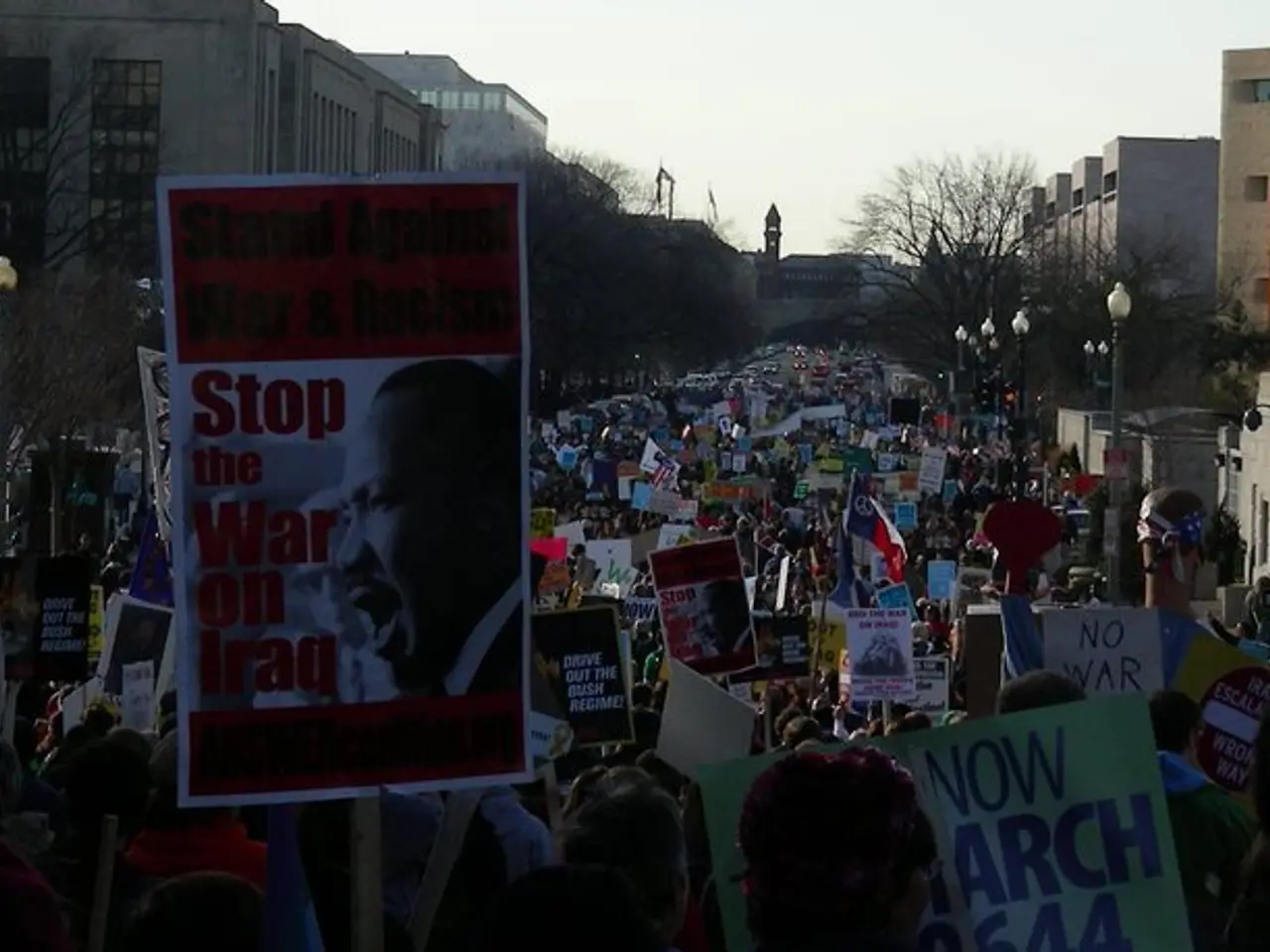Clashes at protests against the government in Serbia
In the heart of Serbia, the political landscape is marred by ongoing protests and escalating violence, following months of unrest sparked by the collapse of a train station roof in Novi Sad last November. The latest skirmishes between protesters and government supporters, as well as security forces, have been reported in numerous larger and smaller cities.
The protests, initially peaceful and led by university students demanding early elections and accountability, have persisted for over nine months and are spreading to smaller towns. These demonstrations have been marked by clashes, police brutality, and confrontations with pro-government forces.
The trigger for the ongoing protests against the Serbian government was the collapse of a freshly renovated train station canopy in Novi Sad on November 1, 2024, which resulted in the death of 16 people. The incident has become a symbol of public outrage over corruption and state negligence.
In Novi Sad, 64 civilians and five military police were injured in clashes at the SNS party headquarters. Skirmishes also occurred in Belgrade, with both protesters and supporters of President Aleksandar Vucic engaging in violent exchanges, accompanied by police interventions. Tear gas was deployed in both cities during the skirmishes.
President Vucic has described protesters as "thugs and murderers," while thanking his supporters for protecting party headquarters. He has vowed to "cleanse" Belgrade and Novi Sad to prevent a "civil war."
Independent experts and opposition figures attribute the train station collapse to shoddy workmanship and corruption under the Vucic government. Demonstrators are criticizing the government for being corrupt and authoritarian, demanding the resignation of President Vucic and new elections.
However, no dominant opposition party has emerged, with the protest movement primarily led by a decentralized student movement. The political dynamics are complex, with Vučić’s government making some concessions but overall transparency remaining disputed and the rhetoric against protesters remaining harsh and inflammatory.
Analysts consider multiple scenarios possible—from electoral solutions within months, ongoing protests and strikes, to further repression. The summer's reduced street presence is expected to increase again in autumn. The political professor Zoran Stojjkovic highlights the critical role of students in framing a political resolution and emphasizes the need for clear communication of electoral gains and immediate preventive actions.
It is important to note that no specific mention of further injuries or casualties outside of Novi Sad was reported in the latest paragraph. The situation in Serbia remains highly volatile and unstable, with no clear political resolution imminent.
What is the current state of politics in Serbia, given the ongoing protests and skirmishes between protesters, government supporters, and security forces? The protests, initially sparked by the collapse of a train station roof in Novi Sad, have persisted for over nine months and expanded to smaller towns, marking general-news headlines and straddling the crime-and-justice realm.





